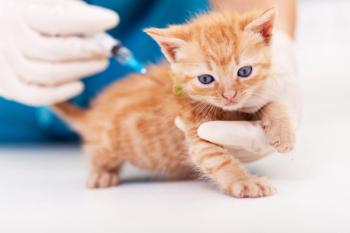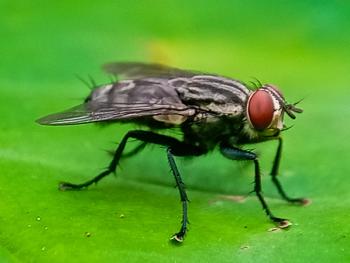
Part One: Veterinary canine urolith epidemiology: 1981-2011
Mineral composition trends have been stabilizing in recent years.
The mineral composition of uroliths in dogs has varied in the last three decades. In this article, we evaluate canine uroliths submitted to the Minnesota Urolith Center to determine whether trends during 2011 were different from previous years. We then look at what this information might mean for our patients.
Composition comparison over three decades
Overall, data indicate minimal variation in calcium oxalate urolith percentages compared with the recent past (Figure 1). But, over time, a shift in composition has occurred.
Table 1
In 1981, calcium oxalate was detected in only 5 percent of canine uroliths submitted to the Minnesota Urolith Center, whereas struvite was detected in 78 percent of canine uroliths. At that time, canine calcium oxalate uroliths were considered to be rare. During subsequent years, canine calcium oxalate uroliths were thought to be associated with trends similar to those that we have documented in cats. As with cats, during the past 30 years, there has been a substantial increase in calcium oxalate uroliths (42 percent) and a substantial decrease in struvite (also called magnesium ammonium phosphate) uroliths (39 percent) (see Table 1 and Figures 1–4).
Figure 1
Possible causes of this decline in the frequency of naturally occurring struvite uroliths and a reciprocal increase in calcium oxalate uroliths include:
1. Widespread use of a calculolytic food designed to dissolve sterile struvite uroliths
2. Widespread use of maintenance and prevention foods modified to minimize struvite crystalluria—some dietary risk factors that decrease the risk of struvite uroliths increase the risk of calcium oxalate uroliths
3. Inconsistent follow-up evaluation of efficacy of dietary management protocols by urinalysis and radiography.
Likewise, the probability that > 95 percent of the canine struvite uroliths submitted to our center were induced by microbes that produced urease-producing enzymes, while < 95 percent of the feline uroliths were not associated with urease-positive microbes, is problematic. A hypothesis that might explain, at least in part, the trend toward increased calcium oxalate occurrence in both groups is the treatment of canine infection-induced uroliths with an appropriate diet and antimicrobial drugs and the treatment of sterile feline uroliths with an appropriate diet.
Therapeutic implications
Being aware that infection-induced struvite is a major mineral type in dogs and sterile struvite is a predominate mineral type in cats—and that the cause of sterile struvite and infection-induced struvite is different—is helpful when formulating therapeutic plans.
Figure 2
An appropriate antimicrobial agent and an appropriate diet (e.g., Prescription Diet s/d Canine canned—Hill's Pet Nutrition) are required to consistently induce dissolution of infection-induced uroliths in dogs, while preventing urinary tract infections is essential to minimize the recurrence of infection-induced uroliths. A special diet is not necessary. Consumption of an appropriate diet is usually effective in dissolving and minimizing the recurrence of sterile struvite uroliths.
Figure 3
A continuing trend
On a side note, during the past 30 years, the number of canine urolith submissions has exceeded the number of feline urolith submissions by a ratio of about 4 to 5. This continuing trend is surprising given that there are more cats living with families in the United States than dogs living with U.S. families. For example, in 2011, we received 57,152 canine uroliths and 13,164 feline uroliths. This results in a ratio of 4.3 canine uroliths for every feline urolith that we received.
Figure 4
Editor's note: With the support of an educational gift from Hill's Pet Nutrition, as well as contributions from veterinarians and pet owners worldwide, the Minnesota Urolith Center is providing quantitative urolith analysis at no charge. Online submission, email notification and electronic retrieval of results are available. With access to our database of about 800,000 samples, the veterinary community is offered the latest information on urolith trends, treatment and prevention suggestions. For details, visit
Dr. Osborne is director and a professor at the College of Veterinary Medicine at the University of Minnesota.
Dr. Lulich is the co-director of The Minnesota Urolith Center and professor of Veterinary Internal Medicine at the University of Minnesota.
Newsletter
From exam room tips to practice management insights, get trusted veterinary news delivered straight to your inbox—subscribe to dvm360.






